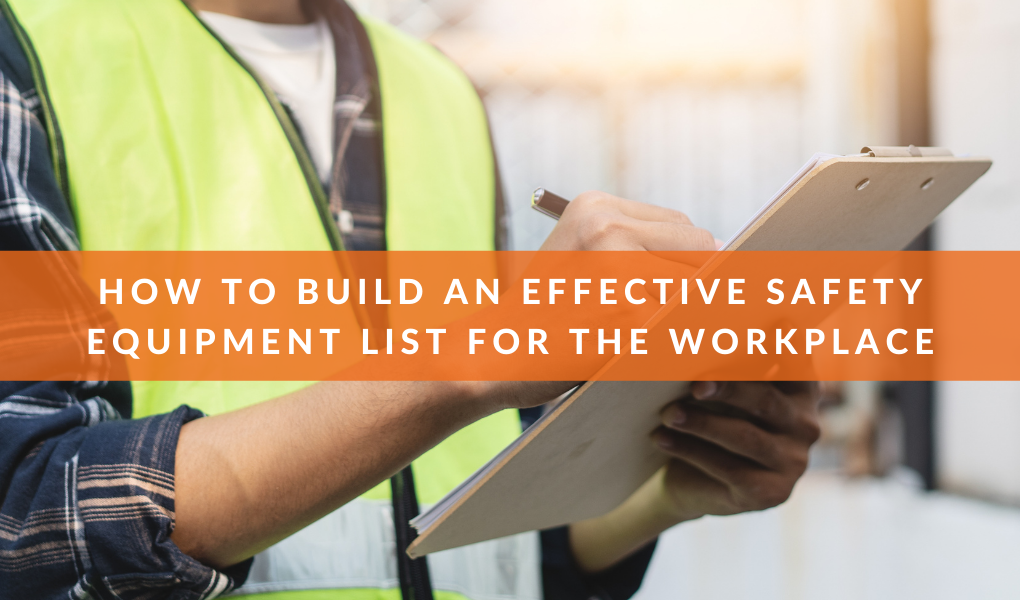
How to Build an Effective Safety Equipment List for the Workplace
A safety equipment list is essential to help protect employees in the workplace. But it must be comprehensive enough to include everything your workers need to stay safe. Machinery, cutting tools, and heavy objects can all pose risks to workers without personal protective equipment (PPE).
Research by the U.S. Bureau of Labor Statistics shows that more than 15,300 injuries involving cuts, punctures, or lacerations occurred in the manufacturing industry in 2019. A quality training program, plus PPE, are fundamental to avoid injuries like these.
In this post, we’ll help you create an effective safety equipment list to increase workplace safety.
Consider Comfort When Creating Your List
Your employees may already have access to all the PPE they need, such as:
- Safety glasses
- Safety gloves
- Safety helmets
- Hearing protection
- Safety shoes/boots
These personal protective equipment examples perform crucial roles in preventing injuries from cuts, flash burns, excessive noises, and heavy objects. But it can be easy to overlook the level of comfort provided when choosing equipment for workers.
You may primarily focus on costs and materials, yet PPE should fit employees properly to maximize safety. Ill-fitting gloves, glasses, or helmets are less likely to be worn, which leaves workers vulnerable to injuries. Another key factor to consider when choosing safety supplies is how one piece of PPE may affect another.
For example, will wearing a particular pair of ear defenders make safety glasses impractical? Could industrial ear plugs be a suitable replacement? Offer workers as much flexibility as possible in your list while still aligning with regulations and standards.
Involve Workers in Planning to Identify Gaps in Your Safety Equipment List
Providing basic PPE may help you meet official requirements, but you could miss out on opportunities to offer more comprehensive protection if you don’t involve workers in planning your list.
Monitor workers as they perform different tasks (e.g., cutting wood or welding) to identify aspects of their work you might have overlooked. For instance, their gloves may not fit correctly while handling certain tools or operating specific machines for long periods of time. Or, perhaps a face shield would be more suitable when cutting wood than simple safety glasses if workers need to stop machinery to wipe sawdust from their faces. That could also reduce the risk of distractions that break concentration when handling tools.
Seek worker input to build an industrial safety equipment list that reflects their needs and meets their goals more accurately.
Factor Visibility and Temperature Into Your List
Research by the National Safety Council (via the Centers for Disease Control and Prevention, or CDC) revealed that insufficient lighting was to blame for 5% of all U.S. industrial accidents.
In that same report, the American National Standard Practice requires lighting of one half to one footcandle for “areas of slight hazard” and two to five for “high hazard areas.” Essentially, workers should have enough lighting to detect potential threats and avoid or correct them.
But even if the lighting in your space meets the minimum requirements, you may still want to include visibility-enhancing items on your list. For example, head torches could prove a welcome addition to your workshop safety equipment list if workers tend to bring their faces closer to machinery or tools to see better in darker areas. Head torches can also be a benefit if they need to repair machinery or replace components away from main lighting sources.
As well as weak lighting, uncomfortable temperatures may also affect a team’s ability to work at their best. The CDC states that core body temperature should stay within 1°C (1.8°F) of its normal level (around 37°C or 98.6°F) to function properly. Workers may become ill if they’re exposed to high heat levels or get distracted enough to create safety risks. That’s why a safety equipment list in construction projects, for instance, could include fans to help workers stay comfortable on external and internal sites.
You should also consider the type of PPE that workers are required to wear and how that could affect them in hot conditions. Safety helmets and gloves could be uncomfortable to wear for long periods in high temperatures, so consider the materials involved and the minimum density/weight required.
Discuss the personal protective equipment list and uses with supervisors or managers to ensure workers receive adequate opportunities to take a break and remove PPE on warmer days. This video from NAHBTV offers some additional helpful tips on keeping workers safe in hot conditions:
A Good Safety Equipment List Benefits Everyone
Creating an effective list helps to protect workers from injuries and employers from costly, damaging litigation issues. Don’t hesitate to speak with your workers to find out what inventory would make the most sense to make them feel safer, more comfortable, and more valued beyond the basic safety equipment list you may already be providing.
Download our Safe Cutting Paper to reduce workplace injuries

